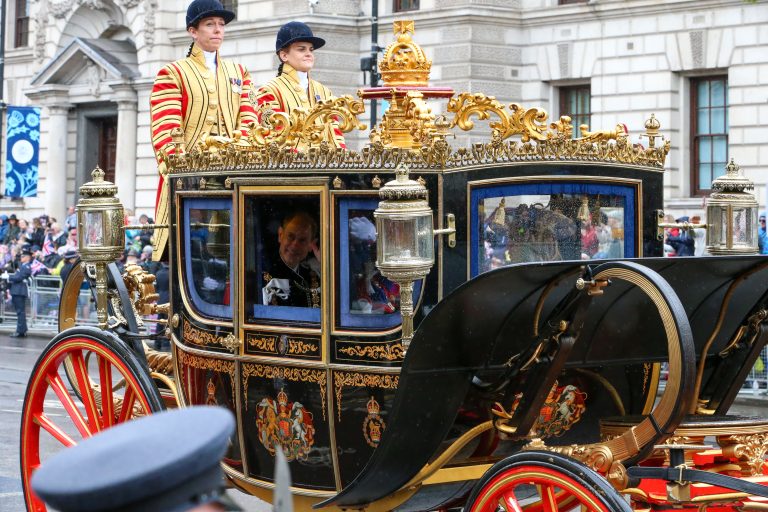In the heart of Irish mythology, amidst tales of powerful gods, mystical creatures, and epic battles, stands a figure whose brilliance shines through the ages: Cú Chulainn, often hailed as Ireland’s child of light. This title isn’t merely a poetic flourish; it speaks to the very essence of his being – a beacon of heroism, unmatched skill, and unwavering dedication to his people. To truly understand the weight and wonder of Ireland’s child of light meaning, we must journey into the intricate web of the Ulster Cycle, the collection of ancient stories that immortalize his deeds.
The Genesis of a Legend: From Setanta to the Hound of Culann
Before he became the formidable Cú Chulainn, our hero was known by the name Setanta. His birth was shrouded in auspicious circumstances, with divine parentage often attributed to him. His mother was Deichtine, the sister of King Conchobar Mac Nessa of Ulster, and his father is often said to be the god Lugh, a deity associated with light, skill, and the arts – further cementing the “Ireland’s child of light” designation. Even in his youth, Setanta displayed extraordinary strength and an indomitable spirit, hinting at the legendary warrior he was destined to become.
The pivotal moment that transformed Setanta into Cú Chulainn is a cornerstone of his legend, a tale often recounted in any “Ireland’s child of light story“. As a young boy, Setanta was on his way to a feast at the house of Culann, the king’s smith. Arriving late, he was unaware of the ferocious guard dog that protected Culann’s dwelling. Without hesitation, the boy fearlessly confronted the massive hound. Such was his strength and agility that he slew the dog with his bare hands, or in some versions, with a hurley stick and sliotar (a wooden stick and ball used in the Irish sport of hurling).
Aghast at the loss of his prized guard dog, Culann was understandably distraught. Displaying a maturity beyond his years, Setanta offered to take the place of the hound until a new one could be trained. It was then that the druid Cathbad, present at the scene, proclaimed, “Since you have slain the hound of Culann, your name shall be Cú Chulainn – the Hound of Culann.” While the name originated from a tragic accident, it would soon become synonymous with unparalleled bravery and martial prowess. This formative Cú Chulainn story highlights his courage, his sense of responsibility, and the touch of destiny that seemed to guide his life.
The Might of Ulster’s Champion: Feats of Unrivaled Heroism
The tales of Cú Chulainn are replete with extraordinary feats of strength, agility, and unwavering courage. He stood as the primary defender of Ulster against the forces of Queen Medb of Connacht during the Táin Bó Cúailnge (The Cattle Raid of Cooley), a conflict sparked by Medb’s desire to possess the magnificent Brown Bull of Cooley.
Alone, the young warrior held off the entire army of Connacht for a significant period, engaging in single combat with a succession of their greatest champions. His prowess in battle was legendary, amplified by his ability to enter a battle frenzy known as the ríastradh or warp-spasm. In this state, he transformed into a terrifying figure, his body contorting, his skin rippling, and his eyes blazing with fury. This terrifying transformation made him virtually unstoppable, a force of nature unleashed upon his enemies.
One of the most famous episodes of the Táin recounts his repeated single-handed defenses against Medb’s warriors at fords and strategic locations. He would challenge their champions to individual combat, often defeating them through a combination of skill, cunning, and sheer ferocity. These encounters not only showcased his martial abilities but also his adherence to a code of honor, as he often allowed his defeated opponents safe passage.
Beyond the Táin, numerous other stories celebrate Cú Chulainn’s heroic exploits. He journeyed to the Land of Shadows to train under the warrior woman Scáthach, where he mastered incredible fighting techniques and acquired the legendary spear, the Gáe Bolga, a weapon said to inflict mortal wounds. He faced mythical beasts, otherworldly foes, and treacherous sorcerers, always emerging victorious through his bravery and skill.
The Complexities of a Hero: Beyond the Battlefield
While Cú Chulainn is primarily remembered as a warrior, his character is far more nuanced than a simple embodiment of brute force. He possessed a keen intellect, a strong sense of justice, and a deep loyalty to his kin and his kingdom. His relationships with figures like King Conchobar, his charioteer Láeg, and the wise druid Cathbad reveal different facets of his personality.
His interactions with women, such as his wife Emer and the warrior queen Aoife, further illustrate the complexities of his character. These relationships were often marked by passion, conflict, and the challenges of a warrior’s life. The tragic tale of his accidental killing of his own son, Connla, stands as a stark reminder of the human cost of his heroic path and the profound grief he was capable of experiencing. This poignant episode adds a layer of depth to the Cú Chulainn story, highlighting the vulnerability that lay beneath his formidable exterior.
Ireland’s Child of Light: A Title Rich in Meaning
The epithet “Ireland’s child of light” resonates on multiple levels. Firstly, it connects him to his potential father, the god Lugh, who was strongly associated with light and solar imagery. This divine lineage imbues Cú Chulainn with a sense of destiny and inherent brilliance.
Secondly, the title reflects his role as a protector and defender of Ulster. In times of darkness and peril, he stood as a beacon of hope, his courage and skill illuminating the path to survival for his people. He was the shield against the encroaching darkness, the unwavering force that held back the tide of invasion.
Furthermore, “Ireland’s child of light meaning” can be interpreted in terms of his inner qualities. Despite the ferocity he displayed in battle, Cú Chulainn possessed an underlying nobility, a commitment to honor, and a radiant spirit that inspired those around him. He was not simply a destructive force; he was a champion who fought for what was right, embodying the ideals of heroism and selflessness.
Cú Chulainn in the Modern Imagination: The Enduring Legacy
The Cú Chulainn story continues to captivate and inspire in modern times. His image as a fierce and courageous warrior has been adopted in various forms of art, literature, and popular culture. As mentioned earlier, the “Ireland’s child of light Fate” connection in the Fate franchise has introduced his legend to a new generation of global audiences, reimagining him in a contemporary context while still drawing upon the core elements of his mythical persona.
Numerous books, often bearing titles that evoke his legendary status, such as “Ireland’s child of light book,” retell his epic deeds for modern readers. These adaptations explore different aspects of his character and the rich tapestry of the Ulster Cycle, ensuring that his stories continue to be passed down through generations.
His influence can also be seen in Irish national identity and cultural expression. Statues and monuments dedicated to Cú Chulainn stand as powerful symbols of Irish heritage and resilience. His name and image are invoked in various contexts, representing strength, bravery, and the enduring spirit of the Irish people.
Exploring the Wider Mythological Landscape: Gods, Goddesses, and the Fairy Realm
To fully appreciate the context of Cú Chulainn’s story, it’s essential to touch upon the broader Irish mythological landscape. While he isn’t a god himself, his interactions with deities and figures from the Aos Sí (the fairy folk) are integral to his tales.
As noted earlier, while there isn’t a direct equivalent to a singular “god of light” in Irish mythology, Lugh’s association with the sun and brilliance makes him a significant figure. Other important deities include Dagda, a powerful and multifaceted god; Danu, often considered an earth mother goddess; and Morrigan, a complex goddess associated with war, fate, and sovereignty.
The Aos Sí played a significant role in the lives of mortals in Irish mythology, often intervening in their affairs, offering aid, or posing threats. Figures like Medb, while a mortal queen, possesses strong connections to the Otherworld and wields considerable magical power. Other notable fairy figures include Aoife, a skilled warrior and former lover of Cú Chulainn, and Cliodhna, a beautiful queen of the fairies associated with love and beauty.
The question of whether figures like Fionn Mac Cumhaill were real is a common one when exploring Irish mythology. Fionn belongs to a later cycle of tales, the Fenian Cycle, and his stories are set in a different era than those of Cú Chulainn. Like many legendary heroes, the historical basis for Fionn is uncertain, with most scholars viewing him as a composite figure or a purely mythological creation whose stories served different cultural and narrative purposes.
Setanta’s Name: A Glimpse into Early Irish Language and Culture
The meaning of Setanta, Cú Chulainn’s birth name, offers a small window into early Irish language and culture. While a definitive translation remains elusive, linguistic analysis suggests potential connections to words implying strength, a journey, or a path. The act of renaming him Cú Chulainn after the incident with Culann’s hound highlights the significance of events and their impact on identity in ancient Irish society. Names held power and meaning, often reflecting significant occurrences or inherent characteristics.
The Absence of a Singular “Irish God of Light”: A Different Pantheistic Structure
The lack of a direct parallel to a “god of light” in the Irish pantheon, unlike the well-defined solar deities in some other mythologies (such as Ra in Egyptian mythology or Apollo in Greek mythology), reflects the unique structure and emphasis of early Irish religious beliefs. While figures like Lugh possessed solar attributes, their roles were often more multifaceted, encompassing a wider range of skills and domains. The focus in Irish mythology often lay on the interconnectedness of nature, the power of the land, and the influence of ancestral spirits and the Aos Sí. Light, while undoubtedly important, was often interwoven with other natural forces and divine attributes rather than being the sole domain of a single deity.
The Enduring Allure of Ireland’s Child of Light
Cú Chulainn’s enduring appeal lies in his multifaceted nature. He is the ultimate warrior, capable of incredible feats of strength and bravery. Yet, he is also flawed, capable of rage, grief, and moments of vulnerability. His stories explore themes of heroism, duty, loyalty, love, loss, and the complexities of human nature within a mythical framework.
The Cú Chulainn story is a testament to the power of oral tradition and the enduring human fascination with heroes who defy limitations and stand against overwhelming odds. Ireland’s child of light remains a vibrant and relevant figure, his legend continuing to inspire and resonate with audiences across time and cultures. Whether encountered in ancient texts, modern adaptations, or even as a character in popular entertainment like “Ireland’s child of light Fate,” Cú Chulainn‘s brilliance as a warrior and a symbol of Irish identity shines undimmed. His tale serves as a powerful reminder of the enduring strength and spirit of the Irish people and the timeless allure of a true hero.
The depth and breadth of the Cú Chulainn story ensure that “Ireland’s child of light meaning” will continue to be explored and reinterpreted for generations to come. His legend is a rich tapestry woven with threads of heroism, tragedy, and the enduring magic of Irish mythology.







